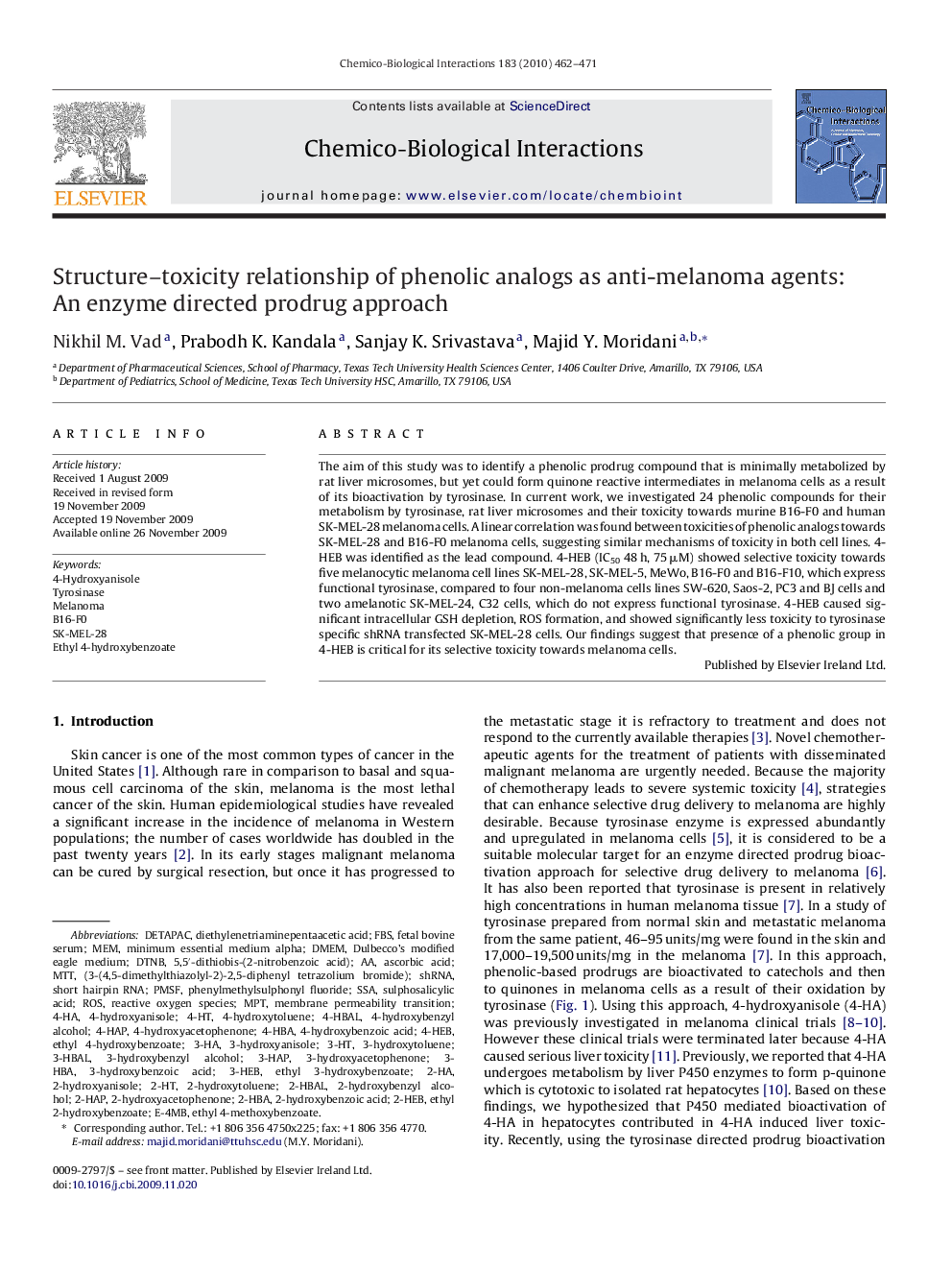| کد مقاله | کد نشریه | سال انتشار | مقاله انگلیسی | نسخه تمام متن |
|---|---|---|---|---|
| 2581257 | 1130181 | 2010 | 10 صفحه PDF | دانلود رایگان |

The aim of this study was to identify a phenolic prodrug compound that is minimally metabolized by rat liver microsomes, but yet could form quinone reactive intermediates in melanoma cells as a result of its bioactivation by tyrosinase. In current work, we investigated 24 phenolic compounds for their metabolism by tyrosinase, rat liver microsomes and their toxicity towards murine B16-F0 and human SK-MEL-28 melanoma cells. A linear correlation was found between toxicities of phenolic analogs towards SK-MEL-28 and B16-F0 melanoma cells, suggesting similar mechanisms of toxicity in both cell lines. 4-HEB was identified as the lead compound. 4-HEB (IC50 48 h, 75 μM) showed selective toxicity towards five melanocytic melanoma cell lines SK-MEL-28, SK-MEL-5, MeWo, B16-F0 and B16-F10, which express functional tyrosinase, compared to four non-melanoma cells lines SW-620, Saos-2, PC3 and BJ cells and two amelanotic SK-MEL-24, C32 cells, which do not express functional tyrosinase. 4-HEB caused significant intracellular GSH depletion, ROS formation, and showed significantly less toxicity to tyrosinase specific shRNA transfected SK-MEL-28 cells. Our findings suggest that presence of a phenolic group in 4-HEB is critical for its selective toxicity towards melanoma cells.
Journal: Chemico-Biological Interactions - Volume 183, Issue 3, 12 February 2010, Pages 462–471